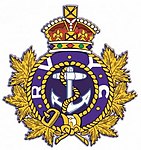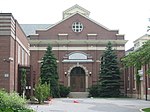Just Desserts shooting
The Just Desserts shooting was a notable crime that occurred in Toronto on the evening of Tuesday, April 5, 1994. Just after 11:00 PM, a group of three men barged into the Just Desserts Café, a popular café on Davenport Road in Toronto's Yorkville neighbourhood. One of the men was armed with a shotgun. The armed robbers ordered the thirty staff and patrons to the back of the store and took their valuables. One of the patrons that evening was 23-year-old hairdresser Georgina Leimonis (aka Vivi Leimonis) who was there with her boyfriend. A dispute broke out when two male patrons refused to hand over their wallets; they were punched by one of the robbers. Soon after, the man with the shotgun fired and hit Leimonis in the chest. The robbers fled the restaurant. Leimonis was rushed to hospital; after surgery she died at 2:45 on Wednesday morning.
Excerpt from the Wikipedia article Just Desserts shooting (License: CC BY-SA 3.0, Authors).Just Desserts shooting
Davenport Road, Toronto
Geographical coordinates (GPS) Address Nearby Places Show on map
Geographical coordinates (GPS)
| Latitude | Longitude |
|---|---|
| N 43.674444444444 ° | E -79.4 ° |
Address
Subway
Davenport Road
M2R 1K5 Toronto
Ontario, Canada
Open on Google Maps






